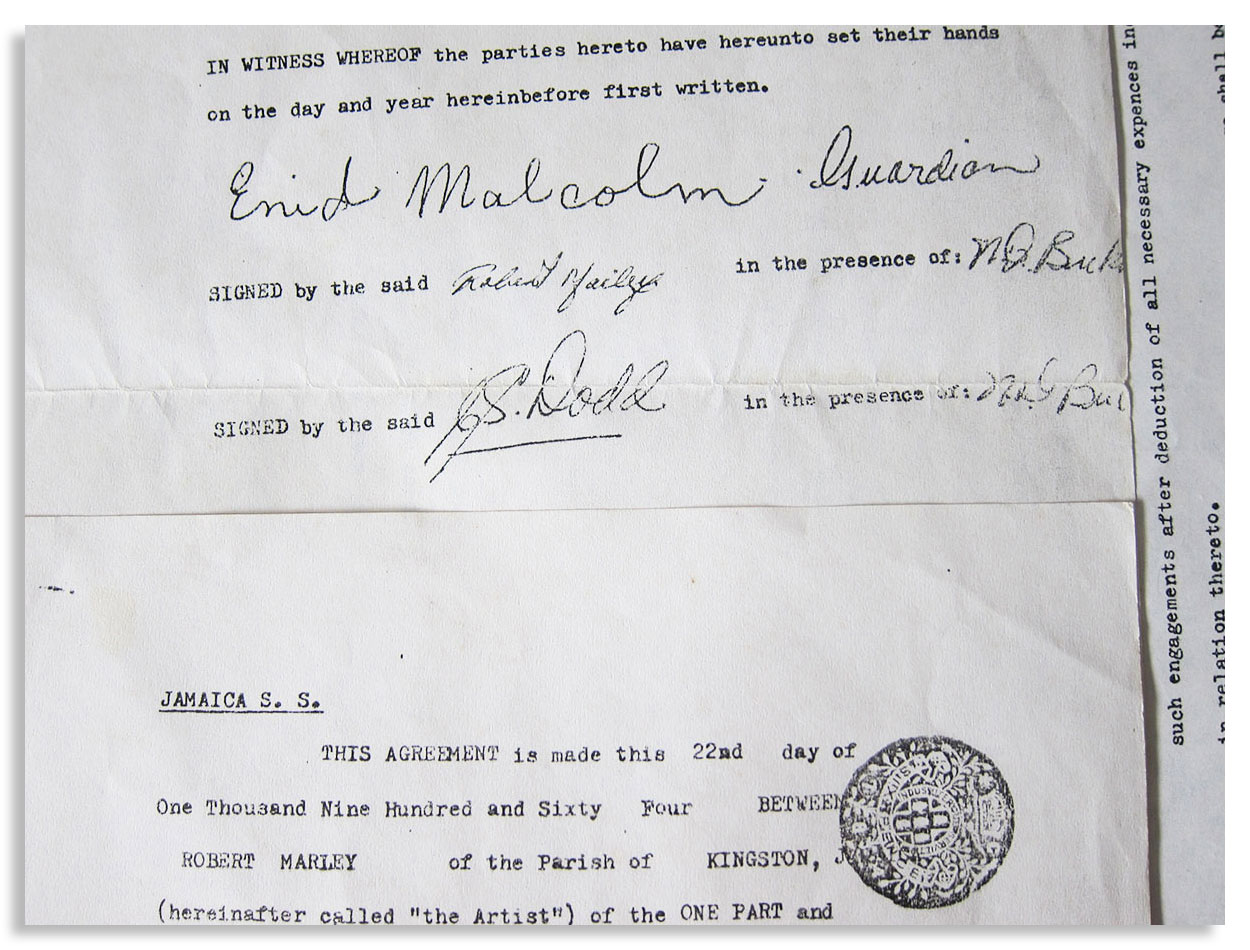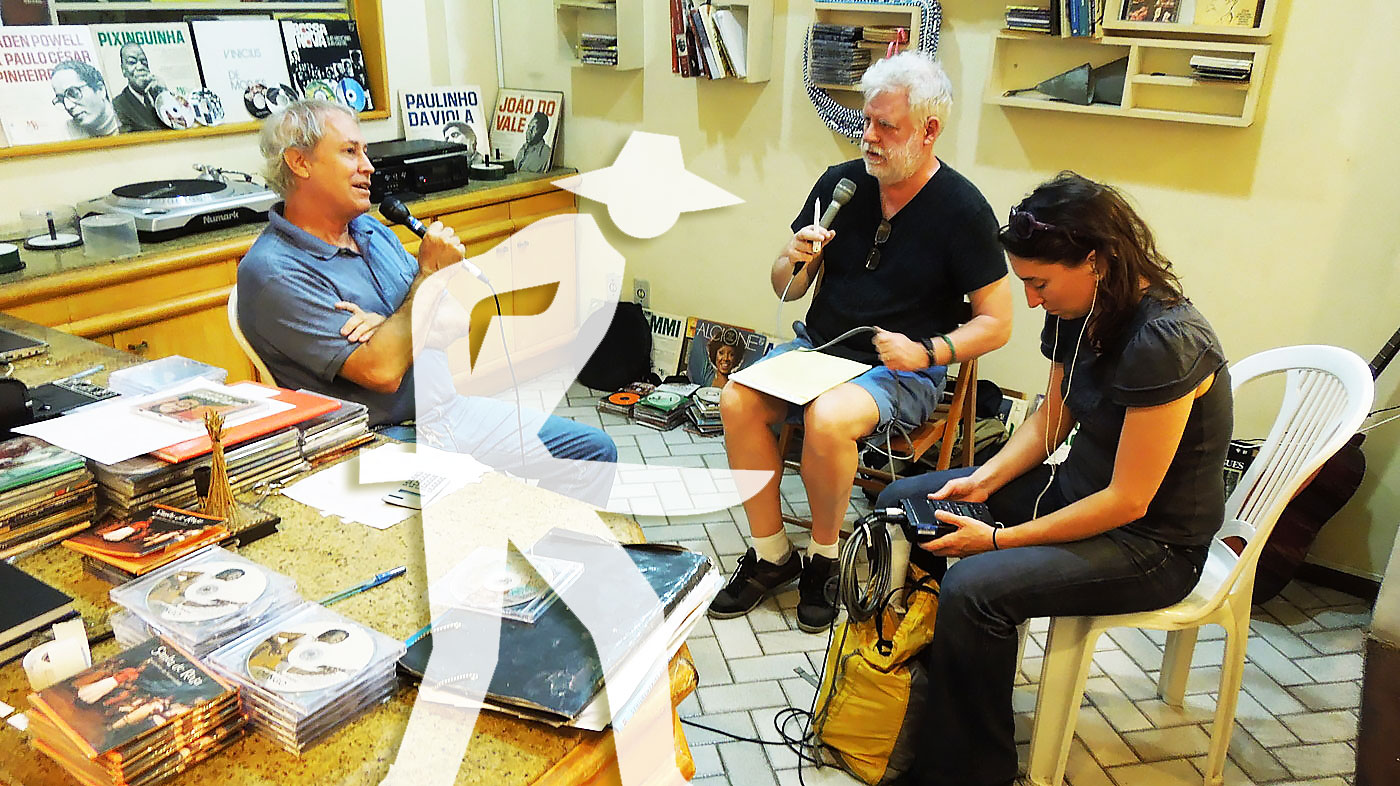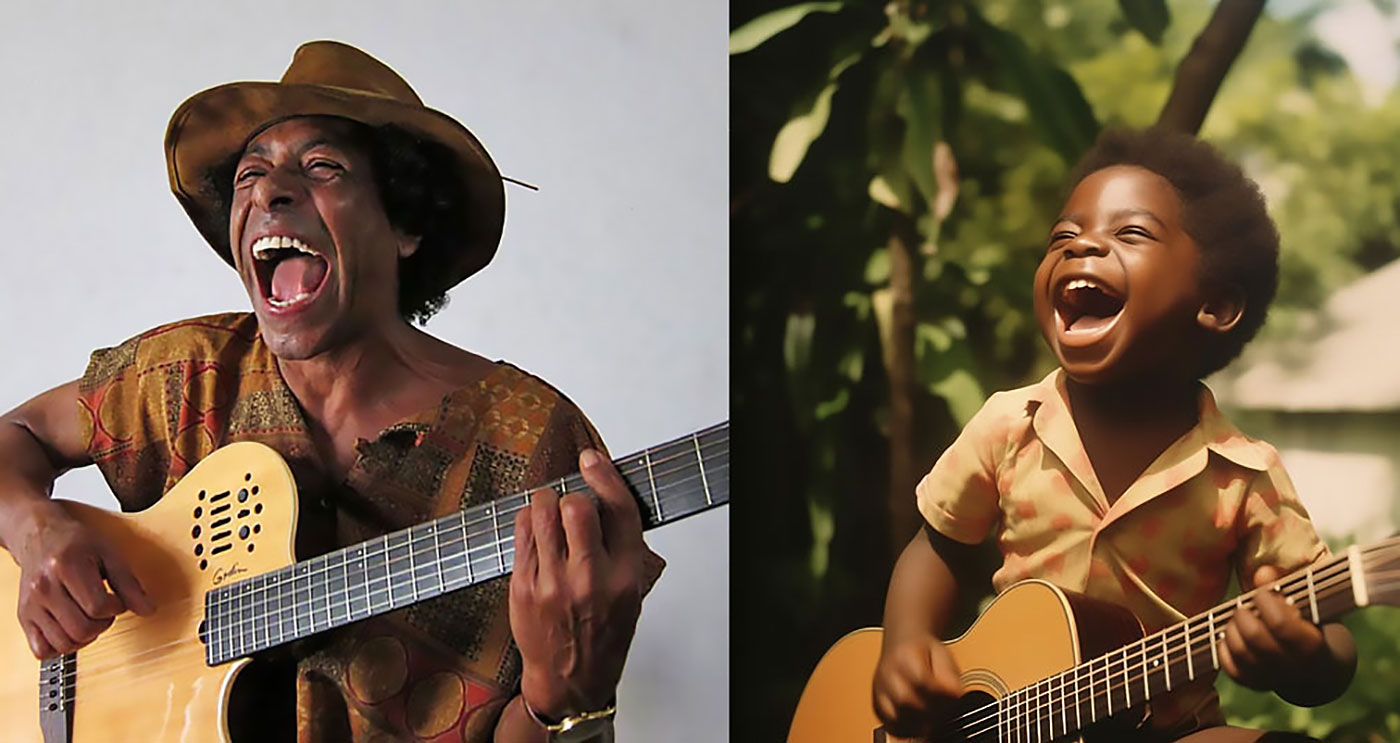What do Jimmy Cliff, Jimmy Page, and Dionne Warwick all have in common? For one thing, they've all lived in Bahia. And so have, and do, untold numbers of other wonderful creators whose magisterial work has never reached beyond very limited surroundings. That's why all this began. If all creators can potentially have global reach, Bahian creators can too.

In this matrix it's not which pill you take, it's which pathways you take, pathways originating in the sprawling cultural matrix of Brazil: Indigenous, African, Sephardic and then Ashkenazic, European, Asian... Ground Zero is the Recôncavo, delineated by the Bay of All Saints, earthly center of gravity for the disembarkation of enslaved human beings — and the sublimity they created — presided over by the ineffable Black Rome of Brazil: Salvador da Bahia.
("Black Rome" is an appellation per Caetano Veloso, son of the Recôncavo, via Mãe Aninha of Ilê Axé Opô Afonjá.)
CURATION
- from this page: by Matrix
Network Node
- Name: Stephanie Jones
- City/Place: Weimar
- Country: Germany
- Hometown: Perth, Australia
Life & Work
-
Bio:
Stephanie Jones’ childhood resonated with the sound of music from a very young age.
She played a lot of instruments, beginning first with the piano, and progressing to the violin, viola, saxophone and flute. However, it was the guitar with its captivating range of sounds and great versatility that especially appealed to her, and it quickly became her first love.
Stephanie Jones is an active soloist and chamber musician who is currently based in Germany. She has recently finished her Masters and is currently studying a Konzertexamen in Classical Guitar Performance with Thomas Müller-Pering at the prestigious University of Music Franz Liszt.
Stephanie won first prize in both the Uppsala International Guitar Festival Competition and the Hannabach Guitar Competition. She was also a finalist in the Deutscher Gitarrenpries and the Salzburg International Guitar Festival. In 2014, through the Fine Music Network National Competition, Stephanie was awarded the Young Virtuoso of the Year. In 2012, Stephanie competed in the prestigious Adelaide International Classical Guitar Competition and subsequently won second prize.
In 2014, Stephanie graduated from the Australian National University with First Class Honours. Over the previous four years, Stephanie was studying with the renowned Timothy Kain and Minh Le Hoang. Following this, she was awarded a Friends of the School of Music Transition Scholarship to assist her in a series of projects following her graduation. Stephanie underwent a successful Australian-Wide Tour which helped launch her new CD “Colours of Spain.” She was also awarded the Clifford Hocking Scholarship as part of the Mount Beauty Music Festival, and nominated for the Freedman Fellowship through The Music Trust. In 2015, Stephanie was awarded an Australian Music Foundation Scholarship, which included a performance at Wigmore Hall in London.
Stephanie has performed extensively around the globe, including three Australian tours, a New Zealand tour, and with the Weimar Guitar Quartet, a Germany and Slovenian tour. She continues to travel regularly for both international concert and festival invitations.
Stephanie has also completed her Diploma exam for the Associate Board of the Royal Schools of Music, her AMEB AMusA exam and LMusA Exam. She was then selected as winner of the “JB Vincent Memorial Award for Best Eligible LMusA Candidate in 2012”.
In 2010, Stephanie was awarded the Royal Schools Anniversary Scholarship and the Harmony Endowment Undergraduate Scholarship to study at the ANU. Furthermore, in 2013, Stephanie was presented with a John Wallis Scholarship on behalf of the Canberra/Versailles Association, and the Friends of the School of Music Travel Grant to study with exceptional teachers and perform throughout Spain and France.
Stephanie has released two albums, “Colours of Spain” (2015), and “Bach, the Fly, and the Microphone” (2009).
Contact Information
- Email: [email protected]
Media | Markets
- ▶ Instagram: stephjonesguitar
- ▶ Website: http://stephaniejonesguitar.com
- ▶ YouTube Channel: http://www.youtube.com/user/stephaniejonesguitar
- ▶ YouTube Music: http://music.youtube.com/channel/UC3TfN5tn8MC8nGS2F5NPK5A
- ▶ Spotify: http://open.spotify.com/album/6QAxS9fdqG6jiXTFexyGUJ
Clips (more may be added)
-
Stélé by Phillip Houghton, performed by Stephanie Jones
759 views
-
Recuerdos de la Alhambra by F. Tárrega, performed by Stephanie Jones
554 views
-
BWV 1001 Fugue by J. S. Bach, performed by Stephanie Jones
503 views
-
Invierno Porteño by Astor Piazzolla, performed by Stephanie Jones
579 views
-
Latin Fingerstyle On A Classical Guitar
522 views
"Dear Sparrow: I am thrilled to receive your email! Thank you for including me in this wonderful matrix."
—Susan Rogers: Personal recording engineer for Prince, inc. "Purple Rain", "Sign o' the Times", "Around the World in a Day"... Director of the Berklee Music Perception and Cognition Laboratory
"Thanks! It looks great!....I didn't write 'Cantaloupe Island' though...Herbie Hancock did! Great Page though, well done! best, Randy"
"We appreciate you including Kamasi in the matrix, Sparrow."
—Banch Abegaze: manager, Kamasi Washington
"This is super impressive work ! Congratulations ! Thanks for including me :)))"
—Clarice Assad: Pianist and composer with works performed by Yo Yo Ma and orchestras around the world
"Dear Sparrow, Many thanks for this – I am touched!"
—Julian Lloyd-Webber: UK's premier cellist; brother of Andrew Lloyd Webber (Evita, Jesus Christ Superstar, Cats, Phantom of the Opera...)
"Thanks, this is a brilliant idea!!"
—Alicia Svigals: World's premier klezmer violinist
Developed here in the Historic Center of Salvador da Bahia ↓ .
![]() Bule Bule (Assis Valente)
Bule Bule (Assis Valente)
"♫ The time has come for these bronzed people to show their value..."
Production: Betão Aguiar
MATRIX MODUS OPERANDI
Recommend somebody and you will appear on that person's page. Somebody recommends you and they will appear on your page.
Both pulled by the inexorable mathematical gravity of the small world phenomenon to within range of everybody inside.
And by logical extension, to within range of all humanity outside as well.
8 billion human beings tend to within six degrees of connection to each other.
In a small world great things are possible.
MATRIX (PARDAL)
I'm Pardal here in Brazil (that's "Sparrow" in English). The deep roots of this project are in Manhattan, where Allen Klein (managed the Beatles and The Rolling Stones) called me about royalties for the estate of Sam Cooke... where Jerry Ragovoy (co-wrote Time is On My Side, sung by the Stones; Piece of My Heart, Janis Joplin of course; and Pata Pata, sung by the great Miriam Makeba) called me looking for unpaid royalties... where I did contract and licensing for Carlinhos Brown's participation on Bahia Black with Wayne Shorter and Herbie Hancock...
...where I rescued unpaid royalties for Aretha Franklin (from Atlantic Records), Barbra Streisand (from CBS Records), Led Zeppelin, Mongo Santamaria, Gilberto Gil, Astrud Gilberto, Airto Moreira, Jim Hall, Wah Wah Watson (Melvin Ragin), Ray Barretto, Philip Glass, Clement "Sir Coxsone" Dodd for his interest in Bob Marley compositions, Cat Stevens/Yusuf Islam and others...
...where I worked with Earl "Speedo" Carroll of the Cadillacs (who went from doo-wopping as a kid on Harlem streetcorners to top of the charts to working as a janitor at P.S. 87 in Manhattan without ever losing what it was that made him special in the first place), and with Jake and Zeke Carey of The Flamingos (I Only Have Eyes for You)... stuff like that.

Yeah this is Bob's first record contract, made with Clement "Sir Coxsone" Dodd of Studio One and co-signed by his aunt because he was under 21. I took it to Black Rock to argue with CBS' lawyers about the royalties they didn't want to pay (they paid).
MATRIX MUSICAL
I built the Matrix below (I'm below left, with David Dye & Kim Junod for U.S. National Public Radio) among some of the world's most powerfully moving music, some of it made by people barely known beyond village borders. Or in the case of Sodré, his anthem A MASSA — a paean to Brazil's poor ("our pain is the pain of a timid boy, a calf stepped on...") — having blasted from every radio between the Amazon and Brazil's industrial south, before he was silenced. The Matrix started with Sodré, with João do Boi, with Roberto Mendes, with Bule Bule, with Roque Ferreira... music rooted in the sugarcane plantations of Bahia. Hence our logo (a cane cutter).
A Massa (do povo carente) / The Masses (of people in need)

-
Add to my PlaylistA Massa - Raymundo Sodré (7,093 plays)
-
Add to my PlaylistSina de Cantador - Raymundo So... (6,909 plays)
-
Add to my PlaylistMagnetismo - Raymundo Sodré ... (6,353 plays)
-
Add to my PlaylistSacando a Cana - Raymundo Sodr... (5,957 plays)
-
Add to my PlaylistMêrêrê - Raymundo Sodré (5,465 plays)
-
Add to my PlaylistJardim do Amor - Raymundo Sodr... (4,677 plays)
-
Add to my PlaylistDebaixo do Céu - Raymundo Sodr... (4,151 plays)
-
Add to my PlaylistDesejo de Amar - Raymundo Sodr... (3,861 plays)
-
Add to my PlaylistOração pra Yá Oxum - Raymundo ... (3,741 plays)
-
Add to my PlaylistYá África - Raymundo Sodré (3,509 plays)
-
Add to my PlaylistMeu Rio, Cadê o Papel - Raymun... (3,177 plays)
-
Add to my PlaylistCasa de Trois - Raymundo Sodré... (2,896 plays)
-
Add to my PlaylistMulher é Laço que Prende o Coração do Vaqueiro - R... (2,556 plays)

































































































































































































































































































































































































































































